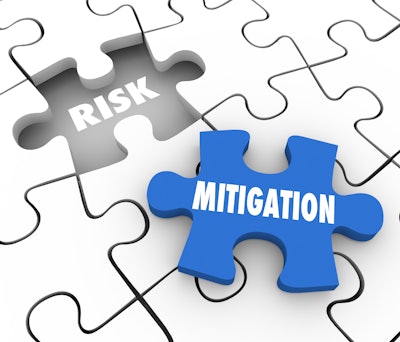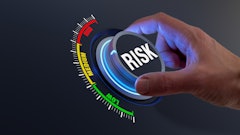
Modern operational technology (OT) environments have become increasingly complex, interconnected systems that blend advanced digital technologies with traditional industrial processes. This convergence has created opportunities for efficiency and innovation, but simultaneously exposed organizations to sophisticated cyber threats that can potentially compromise entire production ecosystems.
Case in point: the manufacturing sector is experiencing a significant surge in cybersecurity threats, with OT environments becoming increasingly vulnerable to sophisticated attacks. According to the Fortinet 2024 State of Operational Technology and Cybersecurity, nearly 75% of OT professionals saw impacts from intrusions—this is up from 49% in 2023.
For food and beverage manufacturers, these statistics are particularly alarming, as security breaches can compromise food safety, disrupt supply chains and expose proprietary processes developed over decades.
Despite these mounting threats, many organizations remain inadequately prepared to defend against cyber intrusions. This vulnerability often stems from a combination of factors: legacy systems that were not designed with modern security requirements in mind, insufficient integration between information technology (IT) and OT security protocols and a lack of comprehensive risk management strategies.
Understanding the unique challenges of OT cybersecurity
Manufacturing OT environments present unique cybersecurity challenges that distinguish them from traditional IT infrastructure. Unlike IT systems, OT directly interfaces with physical machinery, control systems and production processes. A cybersecurity breach in an OT environment is not merely a data protection issue—it represents a direct threat to physical operations, worker safety, product quality and organizational continuity.
The complexity stems from multiple interconnected factors. Legacy industrial control systems often run on outdated software and hardware that were never designed with modern cybersecurity principles in mind. These systems may lack fundamental security features like robust authentication, encryption, or vulnerability patching mechanisms. Moreover, many manufacturing organizations have been slow to update these critical infrastructure components, fearing potential disruptions to ongoing production processes.
A strategic approach to OT cybersecurity risk management
Effective OT cybersecurity requires a holistic, strategic approach that transcends traditional security paradigms. Rather than treating cybersecurity as a purely technical challenge, organizations must view it as a comprehensive business risk management strategy. This approach demands intricate collaboration across multiple organizational domains, including IT, OT, engineering and executive leadership.
To address these challenges and build robust cybersecurity frameworks specifically tailored for OT environments, organizations need a structured, phase-based approach to risk management. Here is a comprehensive breakdown of the five essential phases that form the foundation of an effective OT cybersecurity program.
Phase 1: Define program objectives, foundational-focused approach, compliance-oriented, baseline tools and early-stage governance.
The journey toward enhanced OT security begins with clearly defined objectives that align with both operational requirements and business goals. This crucial first phase involves:
· Establishing clear objectives, security metrics and success criteria: Develop quantifiable OT security measures reflecting critical infrastructure protection needs. Create risk assessment frameworks tailored to industrial control systems. Define baseline indicators addressing operational system availability, integrity and confidentiality. Implement monitoring systems to track progress against security benchmarks. Balance security requirements with operational efficiency to avoid impeding business functions. Set realistic implementation timelines with defined milestones for accountability.
· Identifying key stakeholders: Map decision-makers across IT, OT, security and executive leadership. Engage plant managers and OT specialists early to build buy-in. Include compliance, legal and risk management departments. Establish communication with equipment vendors and technology partners. Incorporate feedback from frontline operators and create cross-functional working groups to break down silos.
· Developing a governance structure: Establish an OT security oversight committee with clear authority and executive sponsorship. Include representation from operations and security domains. Define escalation pathways for incidents and policy exceptions. Create structured approval workflows for infrastructure changes. Implement separation of duties across OT environments. Develop verification processes for regulatory compliance. Establish periodic review cycles and document clear roles and responsibilities.
· Creating documentation standards: Develop standardized templates for OT security policies. Implement version control systems for all documentation. Create accessible procedural guides for routine security tasks. Include detailed network architecture diagrams with security zone demarcations. Establish change management documentation requirements. Create incident response playbooks for OT-specific scenarios. Maintain comprehensive asset inventories with security classifications to prioritize protection measures.
Phase 2: Identifying assets and vulnerabilities to develop context and categorize risk, align business goals between OT and IT, develop roadmaps for broader approach.
Comprehensive asset visibility forms the foundation of robust OT cybersecurity. Organizations must conduct thorough assessments of their OT infrastructure to identify vulnerabilities, building sophisticated inventory and mapping processes. Advanced asset discovery technologies create dynamic, real-time maps of technological ecosystems using passive and active scanning. This phase requires:
· Implementing asset discovery and inventory management processes: This must be done with OT-compatible scanning tools that do not disrupt operations. Organizations need to create centralized asset databases with security-relevant details and establish automated processes for continuous updates. Industrial-grade asset tagging connects physical devices with digital records while documenting operational context helps prioritize security investments.
· Conducting comprehensive vulnerability assessments: OT vulnerability assessments require balancing security with operational stability through passive network monitoring while respecting production system sensitivity. Organizations need tailored testing methodologies for proprietary OT systems, scanning schedules aligned with maintenance windows and vulnerability prioritization frameworks that incorporate safety implications and process criticality.
· Align OT and IT business goals: Integrate governance, shared KPIs, collaborative processes, compatible technologies and unified security strategies—all supported by executive leadership and focused on delivering measurable business value.
· Mapping data flows and communication patterns: Data flow mapping documents all communication protocols and creates visual network maps showing information paths between zones. Critical aspects include identifying unauthorized connections and analyzing traffic to establish behavioral baselines. Documentation should detail required ports, services and interactions with external networks.
· Documenting legacy systems and their security challenges: Legacy system documentation requires detailed profiles capturing technical specifications and modifications. Organizations must identify unsupported systems, proprietary protocols lacking security features and hardware limitations. Compensating control strategies and formal risk acceptance documentation are needed, along with specialized monitoring solutions and migration roadmaps.
Phase 3: Prioritize action based on risk reduction that is tied to likelihood and consequence, drive ROI, gain alignment further across the organization.
Effective risk prioritization involves developing sophisticated scoring mechanisms that consider both the likelihood of a potential breach and its potential consequences. This means moving beyond simplistic vulnerability scoring systems to create context-aware risk evaluation frameworks that understand the unique characteristics of manufacturing environments. This includes:
· Developing a risk-based framework for vulnerability prioritization: This requires organizations to create a multi-dimensional assessment model that weighs technical severity against business criticality. This framework should incorporate threat intelligence to identify actively exploited vulnerabilities, consider exposure levels across network segments and evaluate potential impacts to safety-critical systems. By mapping vulnerabilities against business processes and regulatory requirements, security teams can identify which issues demand immediate attention versus those that represent acceptable risks.
· Creating a systematic approach to patch management that considers operational constraints: This involves establishing governance processes that balance security needs with production requirements. This includes building detailed asset inventories with dependency mapping, establishing tiered deployment schedules based on risk levels and developing specialized procedures for legacy systems with limited support options. Successful patch management in industrial environments requires close collaboration between security, operations and business stakeholders to identify appropriate maintenance windows and establish clear change management protocols.
· Establishing procedures for testing patches in non-production environments: This forms a critical safeguard against potential disruptions, requiring investment in test environments that accurately mirror production systems. It also requires developing comprehensive test plans that validate both security efficacy and operational stability and establishing clear acceptance criteria before production deployment. For critical systems, gradual rollout strategies with monitoring periods between deployment phases can further reduce risk.
· Implementing compensating controls where immediate patching is not feasible: This provides essential risk reduction while permanent solutions are developed. These controls might include enhanced network monitoring focused on exploitation signatures, temporary firewall rules to block specific attack vectors, or adjustments to user access permissions to limit potential exposure. The goal is to create defense-in-depth strategies that mitigate risk while preserving operational capabilities.
· Documenting risk acceptance decisions and their justification: Ensuring organizational accountability provides critical context for future security planning. This documentation should clearly articulate the business rationale for accepting specific risks, quantify potential impacts, identify key stakeholders who approved the decision and establish timelines for reassessment. This creates an auditable trail of security decisions and prevents temporary exceptions from evolving into permanent vulnerabilities.
Phase 4: Maturing and scaling workflows to include threat intelligence, standardizing security reporting to leadership, early-stage response automation and automating routine tasks where possible.
Organizations must build scalable, efficient security processes that transform security from a reactive necessity to a strategic asset. Standardization across facilities ensures consistent protection regardless of location or system type. This critical phase includes:
· Standardizing security procedures: Standardization across different facilities and operations creates operational consistency and enables reliable security outcomes. Security teams develop comprehensive documentation, clear communication channels and shared protocols that ensure uniform protection across the enterprise.
· Integrating threat intelligence: Security teams incorporate external threat data with internal monitoring to identify emerging threats before they impact operations. This proactive approach enables organizations to strengthen defenses against evolving attack techniques and industry-specific vulnerabilities.
· Automating routine security tasks: Organizations implement monitoring tools, automated vulnerability scanning and centralized update management to maintain continuous protection without overwhelming staff resources. This automation frees security personnel to focus on strategic analysis and response to complex threats, while reducing human error.
· Developing OT-specific incident response procedures: Security teams create clear escalation paths, establish containment strategies that prioritize operational continuity and define recovery procedures that maintain safety parameters. These tailored approaches ensure rapid, effective responses without compromising critical operations.
· Implementing security reporting for leadership: Regular, standardized security reporting keeps leadership informed about the organization's security posture, emerging threats and mitigation efforts. These reports translate technical details into business impact assessments that support strategic decision-making.
· Creating comprehensive security training programs: Regular exercises, scenario-based learning and role-specific security education build a security-conscious culture. These programs evolve continuously to address emerging threats and changing operational requirements.
· Establishing metrics: Measuring the effectiveness of security controls provides tangible evidence of security program value. Organizations track response times, vulnerability remediation rates and security incident impacts to demonstrate improvement over time and justify security investments. These metrics guide strategic decision-making and help identify areas requiring additional attention or resources.
Phase 5: Integration of automated capabilities, KPI-driven operation, playbook automation and expansion of OT security charter.
The cybersecurity landscape evolves rapidly, requiring adaptive security frameworks with real-time monitoring capabilities. In addition to establishing baseline behavioral patterns for industrial systems, advanced threat detection systems use machine learning to establish behavioral baselines. Any deviation from these established patterns can trigger immediate investigative and protective responses, dramatically reducing potential breach windows. Security is not a destination but a journey. The final phase focuses on continuous improvement through:
· Integrating SOAR (Security Orchestration, Automation and Response): Integration of security tools into unified workflows, automating repetitive tasks while standardizing incident response, ultimately reducing response times and enhancing overall security effectiveness.
· Regularly reviewing and updating security policies and procedures: Organizations must conduct periodic assessments to identify new vulnerabilities while continuously monitoring emerging threats and adapting security controls accordingly. Effectiveness measurement against established metrics allows for intelligent adjustment of resource allocation based on changing risk profiles.
· Monitoring emerging threats and adapting security controls accordingly: This is essential in today's cybersecurity landscape. As threats evolve, security teams must enhance detection, improve mitigation strategies and foster collaboration. Integrating security throughout product development and organizational processes creates a comprehensive defense. Zero-trust architectures strengthen this approach by requiring continuous verification of all access attempts, creating multiple protective layers that complicate attackers' paths to sensitive assets.
· Adjusting resource allocation based on changing risk profiles: Effective cybersecurity also requires breaking down traditional silos between IT and OT environments. As industrial systems become more connected, the convergence of these previously separate domains introduces new vulnerabilities that must be addressed through coordinated security strategies. This convergence necessitates new skills, tools and methodologies that bridge the gap between information security and operational safety.
The critical role of IT-OT collaboration
Throughout all five phases, success depends heavily on strong collaboration between IT and OT teams. These traditionally separate domains must work together to:
· Share threat intelligence and security best practices
· Develop security controls that protect both information and operational assets
· Ensure security measures do not compromise operational reliability
· Create unified incident response procedures
· Maintain clear communication channels during security events
Cultural and organizational transformation
Technical solutions alone cannot address cybersecurity challenges. Organizations must cultivate a comprehensive security culture that emphasizes continuous learning, cross-functional collaboration and proactive risk management. This requires substantial investment in training programs, communication strategies and organizational development initiatives.
Successful OT cybersecurity programs break down traditional silos between IT, OT and business units. They create collaborative frameworks that foster mutual understanding, shared objectives and coordinated response strategies. This cultural transformation is often more challenging—and more impactful—than implementing specific technological solutions.
Future trajectories in manufacturing cybersecurity
As cyber threats evolve, food and beverage manufacturers must protect their OT environments. This five-phase approach provides a framework for building security programs that address current threats while adapting to future challenges. Organizations implementing this approach are better positioned to protect their operations, customers, partners and the food supply chain. In an industry where safety is paramount, effective risk management is a business imperative.
Manufacturing cybersecurity must evolve alongside advancing technologies. The future of OT security requires intelligent, adaptive systems that anticipate risks through AI, machine learning and predictive analytics integration. Digital twins, simulation environments and threat modeling will be crucial for developing proactive security strategies. Organizations integrating these technologies will gain competitive advantages, transforming cybersecurity from a cost center to a strategic enabler.
OT cybersecurity in manufacturing requires holistic approaches balancing innovation, operations and security. Organizations must create resilient ecosystems prepared for complex threats through comprehensive risk management strategies. Success demands continuous learning, investment and organizational commitment beyond technological solutions—requiring a fundamental reimagining of how organizations protect their technological infrastructures.


















